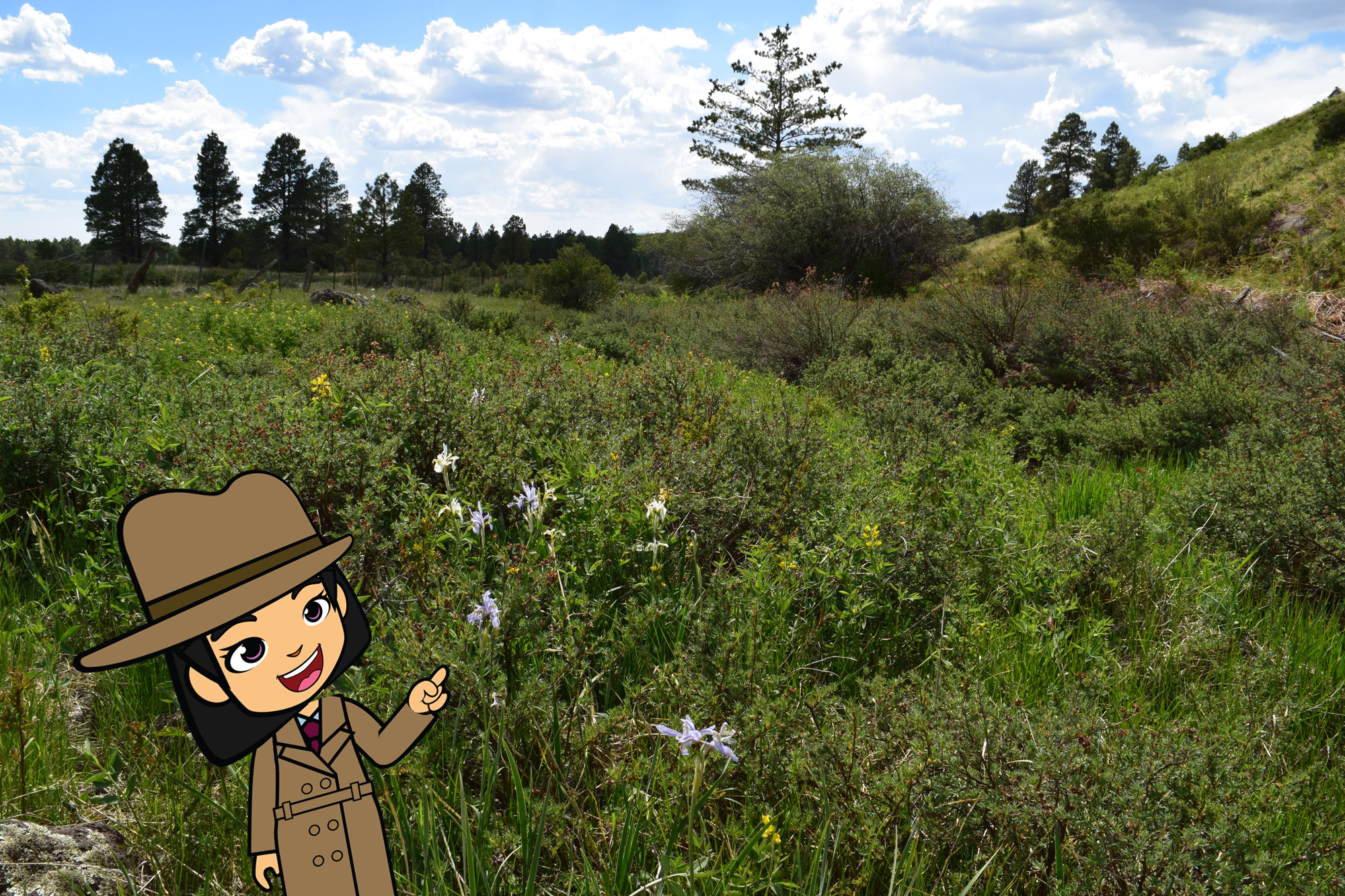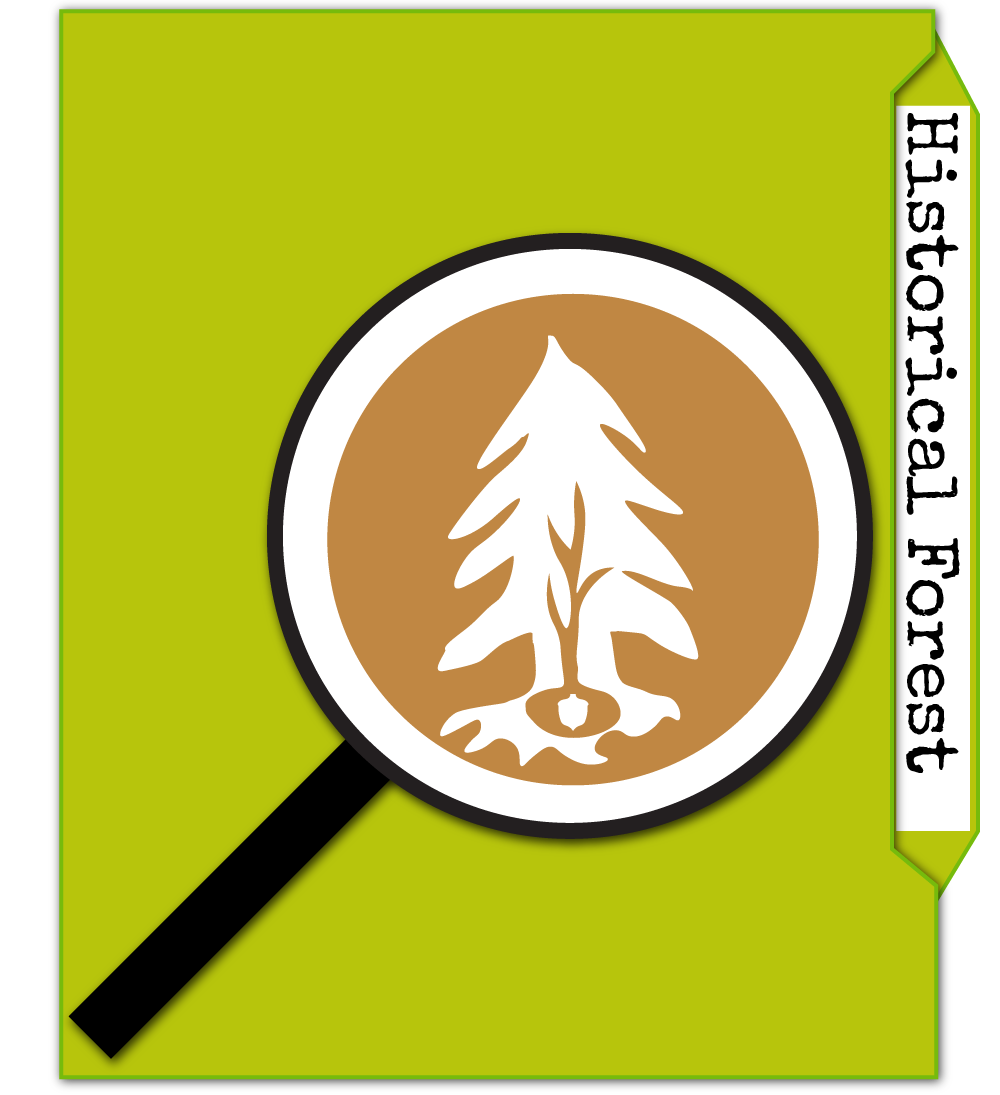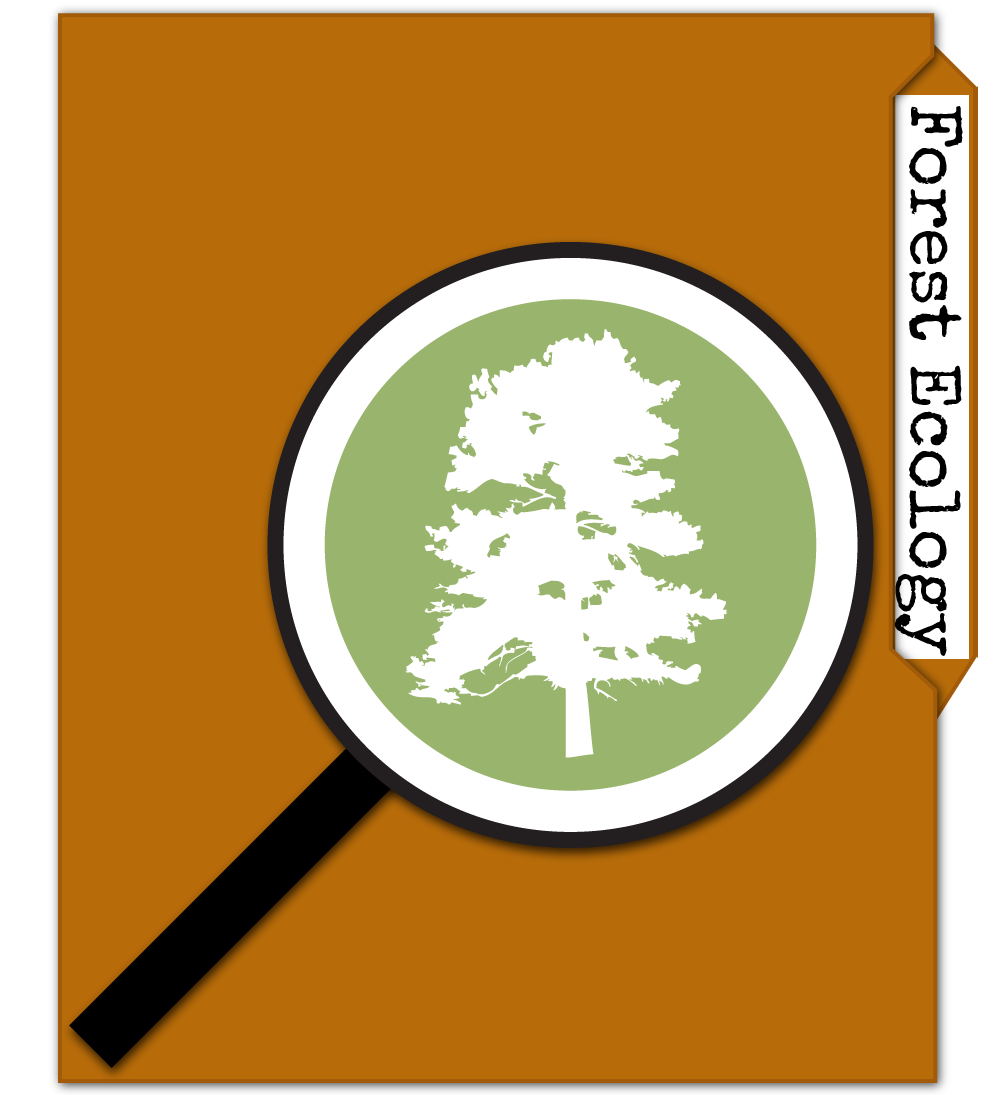Forest Ecosystems
In the Forest Ecosystems Investigation, your mission is to figure out how plants and animals survive in the forest. What do they need to grow and thrive?
Why do we care about the hows and whys of forest life? Because by knowing what life in the forest needs, we can begin to answer the big question: how can WE manage the forest for its ongoing health and beauty? Connecting forest ecosystem ideas to evidence and ideas from the other investigations will help you solve the case!
Grab your thinking hat and special powers of observation and investigate Forest Ecosystems.
- Click
to expand any activity in the list below.
- Gather evidence: As you read, watch, and play, write your observations into your Investigator's Journal.
- When you see this icon
 , write the answers to the questions shown. These will help you assemble the pieces of the case like a puzzle.
, write the answers to the questions shown. These will help you assemble the pieces of the case like a puzzle.
When you feel that you have all that the Forest Ecosystems Investigation has to give, choose a different investigation, or Solve the Case!
Visit the Scene of the Case
Our friends at the Greater Flagstaff Forest Partnership have created a fun way to investigate forest ecosystems.
Click the link below the picture to Enter the Interactive Forest Kiosk.
There, click on the biodiversity and wildlife icons to reveal clues to understanding the forest. Remember that ecosystem is your top interest in this investigation, so be sure to click on all four of these icons.
Investigator's Journal:
What did you learn about forest ecosystems from the Interactive Forest Kiosk?
What new questions do you have about Forest Ecosystems?
Ponderosa Pete
Listen to this intriguing story written by Julie Blake Gidley and read to us by Helena Murray.
'Prefer to watch and listen on Youtube? Click here. Be sure to close the tab when you're ready to return!
Take a moment to think about Ponderosa Pete's story and write your observations in your Investigator's Journal:
What did you learn from listening to the story of Ponderosa Pete?
What is biological diversity and why is it important?
Bark beetles are a natural part of forest ecosystems, and yet they have become a problem in unhealthy forests. Why do you think this is the case?
What new questions do you have about Forest Ecosystems?
What do plants need to grow and thrive? What do animals and humans need to survive?
Let's watch and see what we can find out!
'Prefer to watch and listen on Youtube? Click here. Be sure to close the tab when you're ready to return!
Add clues about survival in the forest to your Investigator's Journal:
List the five critical elements that plants and animals need to grow, survive, and thrive.
What do these things have to do with survival of the forest? What about the animals, insects, and plants who live in it?
The Forest Ecosystem is made up of many parts.
How many parts of the forest can you name in the picture below?
178375783_1373062403067196_6331201210761835652_n.jpg

Photo courtesy of Lorie Cavalli
Biodiverse riparian area in Hart Prairie within Coconino National Forest.
Take your Investigations Outdoors with an Ecosystem Circle or Square
- Take a looong piece of yarn or a hula hoop and go outside!
- Lay out the yarn in the shape of a large circle (about 4 ft. in diameter if possible) or lay the hula hoop on the ground. The area inside the circle is your mini ecosystem!
- Look closely and identify as many parts of this ecosystem as you can. Pick biotic (living) and abiotic (non-living) parts. Both are important in an ecosystem.
Take a Hike with Biodiversity Bingo:.
Are the wildflowers blooming in Northern Arizona? Click this link and print out a bingo card. Then take your bingo card on a hike in search of the vast number of seasonal wildflowers of Northern Arizona. You can close the tab to return!
You can also view the bingo card on your cell phone or tablet.
Note: These links will prompt you to make a copy of a Google Slideshow document in a new tab. Just switch back when you're ready to return.
That was a lot of great investigation! Add your notes to your Investigator's Journal:
List at least three biotic and three abiotic parts of the forest.
Sketch your mini ecosystem and add labels to describe how the parts work together to make the forest ecosystem work.
Look closely at this beautiful prairie photo. How many different kinds of flowers do you see?
Wildflowers.jpg
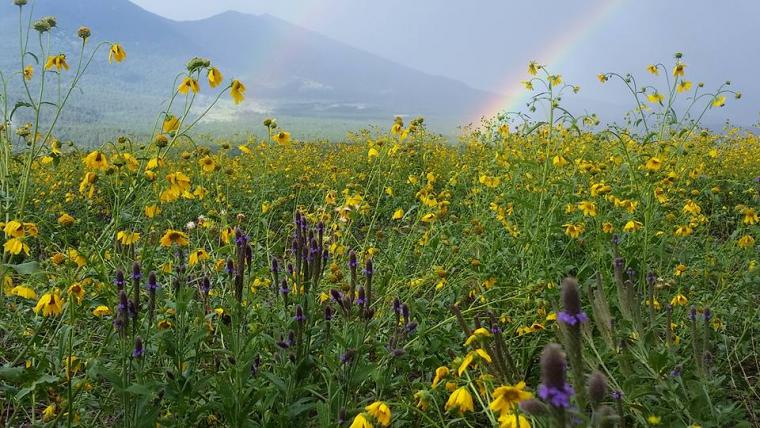
Wildflowers- Photo courtesy of Lorie Cavalli
1? 5? 25? More?
This amazing variety of life is called biodiversity. Biodiversity describes more than the variety of living plant species in an ecosystem. It can also relate to animals, bacteria, and fungi.
Resilience is the ability of an ecosystem to maintain its normal patterns of nutrient cycling and biomass production after being subjected to damage.
Watch and listen for these important concepts as they relate to forest ecosystems while you enjoy these videos.
Prefer to watch and listen on Youtube? Click here. Be sure to close the tab when you're ready to return!
>
Prefer to watch and listen on Youtube? Click here. Be sure to close the tab when you're ready to return!
Use your Investigator's Journal to describe and illustrate biodiversity and resilience in a forest ecosystem:
Describe a biodiverse forest.
Recall the definition of resilience: the ability of an ecosystem to maintain its normal patterns of nutrient cycling and biomass production after being subjected to damage.
What IS the "normal pattern of nutrient cycling" in a forest? What is "biomass production" in a forest? What kinds of damage might a forest experience?
How does a forest's biodiversity affect its health and resilience?
Let's Meet the Abert's Squirrel!
image.png
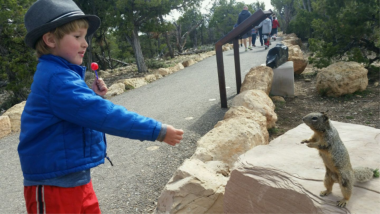
Photo courtesy of William Ascarza
Remember Bertie from Ponderosa Pete? Abert's squirrels, like Bertie, depend on the Ponderosa Pine tree for food and shelter. In fact, the Abert's squirrel has adapted to living in the Ponderosa Pine forest all year (even in the cold winter). Can you think of parts of the Ponderosa Pine tree that the Abert's squirrel could use for food and shelter?
The Ponderosa Pine Tree provides food and shelter for the Abert's squrrel, but the Abert's squirrel helps the Ponderosa Pine Tree out too! The strong dependency of the Abert's squirrel on the Ponderosa Pine is called a symbiotic relationship.
Learn about this symbiotic relationship at the Bandelier National Monument website.
Vocabulary: Symbiosis is a close relationship between two different kinds of organisms, or living things. Adaptation: Special body part or behavior that help a living thing survive in an environment.
Suspect Profile
Abert's Squirrel.jpg

Photo courtesy of The Arboretum of Flagstaff
Name: Abert’s Squirrel
Habitat: Ponderosa Pine Trees
Height: 8 - 11 inches
Food Sources: Ponderosa Pine bark and seeds
Predators: Northern goshawks
Other details: Symbiotic relationship with the Ponderosa Pine Tree
Investigator's Journal:
In what ways is the Ponderosa Pine important to the Abert's squirrel?
Can you think of other examples of plants and animals in the forest that need each other to survive?
Take the Challenge: Build Your Own Forest Ecosystem
Forest Investigators! Let's build both a healthy and unhealthy forest ecosystem! If you've explored other case folders, like Fire Ecology or Forest History, be sure to draw upon everything that you learned there.
Strong Evidence for a Healthy (Resilient, Adapted) Forest Ecosystem! Biodiversity in the forest ecosystem is one key to forest health. When a variety of plants and animals make up the forest, the system is more resilient to challenges such as drought and catastrophic fire. That means that a healthy forest will be less affected by such challenges and will bounce back more easily when they are encountered.
Strong Evidence for an Unhealthy (Challenged) Forest Ecosystem! When the forests succumb to natural stressors such as drought and human-caused stressors such as tree harvest and fire-suppression. Forests that are overcrowded with trees and little biodiversity.
Forest Ecosystem Challenge! Forest Investigator, build your own forest ecosystem by dragging the living and non-living parts into their forest scene!
Building the biodivese forest model.JPG
Photo courtesy of Lorie Cavalli
Building a biodiverse forest model
Click here to launch the Forest Ecosystem Board
Note: This link will prompt you to make a copy of a Google Slideshow document in a new tab. Just switch back when you're ready to return.
Make Observations as you build the forest ecosystem: What patterns do you see in the healthy forest/unhealthy forest? What are the effects of having a mix of plants, trees and animals in the forest ecosystem (biodiversity)? When is fire good for forest ecosystem? When can it be harmful (catastrophic)? How can I improve the biodiversity in the forest ecosystem? What processes could have caused the unhealthy forest ecosystem?
What did you learn by building your own forest ecosystem? Add your notes to your Investigator's Journal:
- Write a few sentences in your journal to describe the patterns that you see in the forest ecosystem.
- Record any patterns you see in the healthy versus unhealthy forest ecosystem in journals.
- How might biodiversity in a healthy forest ecosystem help our watershed?


